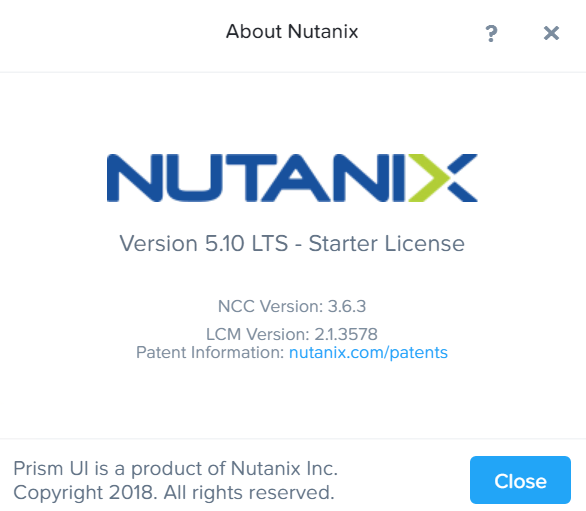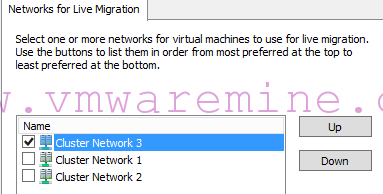Sometimes it might happen that you lost datastore with all date for some reasons, deleted by mistake, VMFS corruption. It happen to me as well. Fortunately, following VMwareKB article I was able to recover VMFS with all data.
The most important – DO NOT PANIC !! 🙂 and DO NOT create new VMFS on that LUN because it will overwrite old partition table.
Recover VMFS3 datastore
To recover VMFS3 volumes or upgraded VMFS5 from VMFS3 (without formatting) we will use old good toll fdisk :-).
- type esxcfg-scsidev -c list LUNs and identify Console device /dev/sd* , in my example it is /dev/sdg with size 507940 MB
- type fdisk -l /dev/sd* (replace * with correct letter) to see info about device – you should not see partition table.
- type fdisk -u /dev/sd* (replace * with correct letter) and follow below steps:
- type n – create new partition
- type p – for primary
- type 1 – for first partition on disk
- type 128 – this is starting block for VMFS which was created using vSphere client
- press Enter – to leave default values for last sector
- press t – select partition type
- optionally you can type L to list all partition types
- type fb for VMware VMFS file system
- type w to write partition on disk
[root@server01 ~]# esxcfg-scsidevs -c Device UID Device Type Console Device Size Multipath PluginDisplay Name eui.001738000a0b0000 RAID Ctlr /vmfs/devices/genscsi/eui.001738000a0b0000 0MB NMP IBM Fibre Channel RAID Ctlr (eui.001738000a0b0000) eui.001738000a0b0049 Direct-Access /dev/sdg 507904MB NMP IBM Fibre Channel Disk (eui.001738000a0b0049) eui.001738000a0b017e Direct-Access /dev/sdf 2097151MB NMP IBM Fibre Channel Disk (eui.001738000a0b017e) [root@vsxet01 ~]# esxcfg-scsidevs -c |grep -i eui.001738000a0b0049 eui.001738000a0b0049 Direct-Access /dev/sdg 507904MB NMP IBM Fibre Channel Disk (eui.001738000a0b0049) [root@server01 ~]# [root@server01 ~]# fdisk -l /dev/sdg Disk /dev/sdg: 532.5 GB, 532575944704 bytes 255 heads, 63 sectors/track, 64748 cylinders Units = cylinders of 16065 * 512 = 8225280 bytes Device Boot Start End Blocks Id System [root@server01 ~]# fdisk -u /dev/sdg The number of cylinders for this disk is set to 64748. There is nothing wrong with that, but this is larger than 1024, and could in certain setups cause problems with: 1) software that runs at boot time (e.g., old versions of LILO) 2) booting and partitioning software from other OSs (e.g., DOS FDISK, OS/2 FDISK) Command (m for help): m Command action a toggle a bootable flag b edit bsd disklabel c toggle the dos compatibility flag d delete a partition l list known partition types m print this menu n add a new partition o create a new empty DOS partition table p print the partition table q quit without saving changes s create a new empty Sun disklabel t change a partition's system id u change display/entry units v verify the partition table w write table to disk and exit x extra functionality (experts only) Command (m for help): n Command action e extended p primary partition (1-4) p Partition number (1-4): 1 First sector (63-1040187391, default 63): 128 Last sector or +size or +sizeM or +sizeK (128-1040187391, default 1040187391): Using default value 1040187391 Command (m for help): t Selected partition 1 Hex code (type L to list codes): L 0 Empty 1e Hidden W95 FAT1 80 Old Minix bf Solaris 1 FAT12 24 NEC DOS 81 Minix / old Lin c1 DRDOS/sec (FAT- 2 XENIX root 39 Plan 9 82 Linux swap / So c4 DRDOS/sec (FAT- 3 XENIX usr 3c PartitionMagic 83 Linux c6 DRDOS/sec (FAT- 4 FAT16 <32M 40 Venix 80286 84 OS/2 hidden C: c7 Syrinx 5 Extended 41 PPC PReP Boot 85 Linux extended da Non-FS data 6 FAT16 42 SFS 86 NTFS volume set db CP/M / CTOS / . 7 HPFS/NTFS 4d QNX4.x 87 NTFS volume set de Dell Utility 8 AIX 4e QNX4.x 2nd part 88 Linux plaintext df BootIt 9 AIX bootable 4f QNX4.x 3rd part 8e Linux LVM e1 DOS access a OS/2 Boot Manag 50 OnTrack DM 93 Amoeba e3 DOS R/O b W95 FAT32 51 OnTrack DM6 Aux 94 Amoeba BBT e4 SpeedStor c W95 FAT32 (LBA) 52 CP/M 9f BSD/OS eb BeOS fs e W95 FAT16 (LBA) 53 OnTrack DM6 Aux a0 IBM Thinkpad hi ee EFI GPT f W95 Ext'd (LBA) 54 OnTrackDM6 a5 FreeBSD ef EFI (FAT-12/16/ 10 OPUS 55 EZ-Drive a6 OpenBSD f0 Linux/PA-RISC b 11 Hidden FAT12 56 Golden Bow a7 NeXTSTEP f1 SpeedStor 12 Compaq diagnost 5c Priam Edisk a8 Darwin UFS f4 SpeedStor 14 Hidden FAT16 <3 61 SpeedStor a9 NetBSD f2 DOS secondary 16 Hidden FAT16 63 GNU HURD or Sys ab Darwin boot fb VMware VMFS 17 Hidden HPFS/NTF 64 Novell Netware b7 BSDI fs fc VMware VMKCORE 18 AST SmartSleep 65 Novell Netware b8 BSDI swap fd Linux raid auto 1b Hidden W95 FAT3 70 DiskSecure Mult bb Boot Wizard hid fe LANstep 1c Hidden W95 FAT3 75 PC/IX be Solaris boot ff BBT Hex code (type L to list codes): fb Changed system type of partition 1 to fb (VMware VMFS) Command (m for help): Command (m for help): w The partition table has been altered! Calling ioctl() to re-read partition table. Syncing disks.
- Run vmkstools -V to discover VMFS back to system
[root@server01 ~]# vmkfstools -V [root@server01 ~]#
- Check log /var/log/messages . As you can kernel see new partition sdg1 which sits on /dev/sdg device . Mission complete successfully.
Sep 19 11:07:48 vsxet01 kernel: [7851834.657658] SCSI device sdg: 1040187392 512-byte hdwr sectors (532576 MB) Sep 19 11:07:48 vsxet01 kernel: [7851834.664579] sdg: Write Protect is off Sep 19 11:07:48 vsxet01 kernel: [7851834.673365] SCSI device sdg: drive cache: write through Sep 19 11:07:48 vsxet01 kernel: [7851834.679887] sdg: sdg1 Sep 19 11:07:50 vsxet01 kernel: [7851836.729279] SCSI device sdg: 1040187392 512-byte hdwr sectors (532576 MB) Sep 19 11:07:50 vsxet01 kernel: [7851836.736230] sdg: Write Protect is off Sep 19 11:07:50 vsxet01 kernel: [7851836.743157] SCSI device sdg: drive cache: write through Sep 19 11:07:50 vsxet01 kernel: [7851836.749681] sdg: sdg1
You should see datastore with new name on ESX server. Rescan HBA on all other servers to bring VMFS back on them.





I will suggest to engage VMware Support if you suspect there is a corruption on the VMFS volume.
Can you provide any guidance on a LUN that was connected as a drive for a VM that was accidentally attached as a datastore instead of a Mapped LUN?
[…] Recover VMFS datastore with all data – VMwaremine – Mine … – Recover VMFS3 datastore. To recover VMFS3 volumes or upgraded VMFS5 from VMFS3 (without formatting) we will use old good toll fdisk :-). type esxcfg-scsidev -c list …… […]
i know its been a year, but this happened to me today 🙁
when i do the esxcfg-scsidevs -c my orphaned volume shows blank for “Console Device” so i cannot perform any of the above processes its always “not found”, I am using ESXi5.5 and tried partedUtil and it doesn’t “see” it either. but it does show under esxcfg-scsidevs- c, it just has no name under “Console Device”.
I’ve worked with VMware support before, back when I had a contract, on an external datastore that became corrupt after a PSOD. Indeed, they can perform miracles.
By the way, if a VMFS5 drive was accidentally left in place during a new Nutanix CE install (which automatically formats all drives without pausing or on-screen warning), do you happen to know of some way to essentially unformat it, and/or get any of the data (some VMs) back off that drive?
I have vmware ESXi4.0 . It has 3 physical drive (500GB main + 500GB extended + 500GB extended. Now 500GB main Drive has been damage.
So it is possibele to recover all 2 extended drive data ? how ?